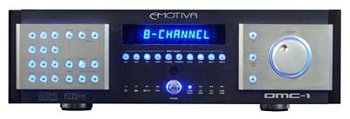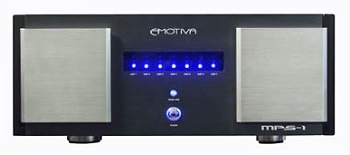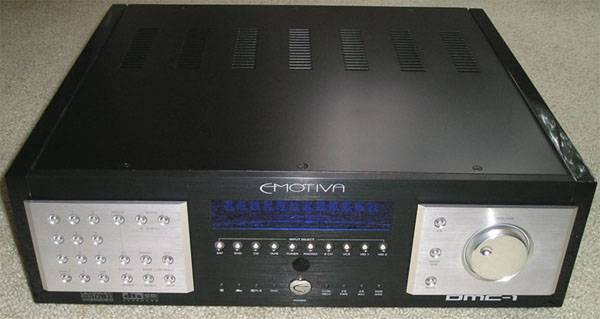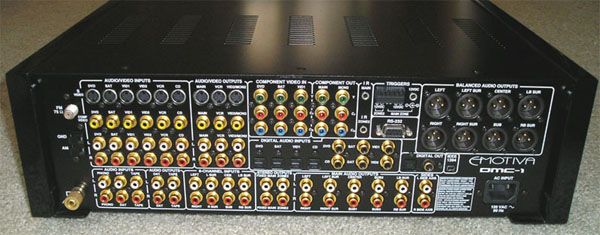|
||||||||
|
Introduction
The Emotiva line marks the companyís venture into
the home-theater electronics world. Knowing Mark Schifter, the president of
AV123.com who seems to always have an abundance of great ideas and, most
importantly, has the energy to realize them, I was not surprised with this
product line expansion. I was happy to get the chance to become acquainted
with these early models. Features The DMC-1 and MPS-1 came well packed, as with other AV123 products. Everything was double-boxed and well padded. The MPS-1 was shipped unassembled, meaning the amplifier case (chassis) and the inside amplifier modules were shipped in separate boxes. Hence some assembly is required for the MPS-1. This was done to avoid the risk of shipping a too-heavy item and also to provide the flexibility to the customers to configure the amplifier to their liking. For example, the MPS-1 can be configured for two, three, four, five, six, or seven channels, depending on the particular customerís need. This is all possible because the MPS-1 employs a monoblock amplifier design. AV123 has also informed me that a new amplifier module (called the EPM-2150) consisting of two channels of amplification per module is now available. This means that you can have up to 14 channels in an MPS-1 chassis.
The Layout The processing engines inside the DMC-1 are quite powerful. It is equipped with 24-bit 192-kHz Analog Devices D/A converters, 24-bit Crystal Semiconductor A/D converters, a 32-bit 20 MHz control microprocessor, and 24-bit 150 MIPS Motorola Symphony DSP processors. But besides this powerful digital processing, the DMC-1 also provides direct two-channel analog bypass to cater to the stereo music purist. The DMC-1 offers balanced as well as unbalanced outputs on all the 7.1 channels. The side-axis channels, however, are only available in unbalanced (RCA) outputs.
If you have a lot of audio-video equipment to connect to the DMC-1, you donít need to worry. It has six A/V inputs and three A/V outputs (each with S-Video/composite video), three audio-only inputs including a phono input (LP player owners should be happy with this inclusion), six coaxial and four optical digital inputs with a pair of coaxial and optical outputs, eight-channel analog inputs, three component video inputs with two outputs, and two tape record outputs. This processor can convert composite and S-Video signals to component video. Also the DMC-1 offers four subwoofer outputs. So, in case you want to populate your listening room with subwoofers, you are sufficiently accommodated by the DMC-1. Other features offered include Zone 2 outputs, DC triggers, an RS-232 port, and AM/FM tuner with 40 presets. There are no DVI or HDMI inputs/outputs, so if you need DVI/HDMI switching, you would have to get an outboard switcher, such as the Gefen unit we reviewed in January of this year. Iíve been told that a two-port HDMI switcher that can connect to the RS-232 port is currently under development at AV123.com. The RS-232 integration would ensure that HDMI switching would be automated with the audio switching in the SSP.
|
||||||||








